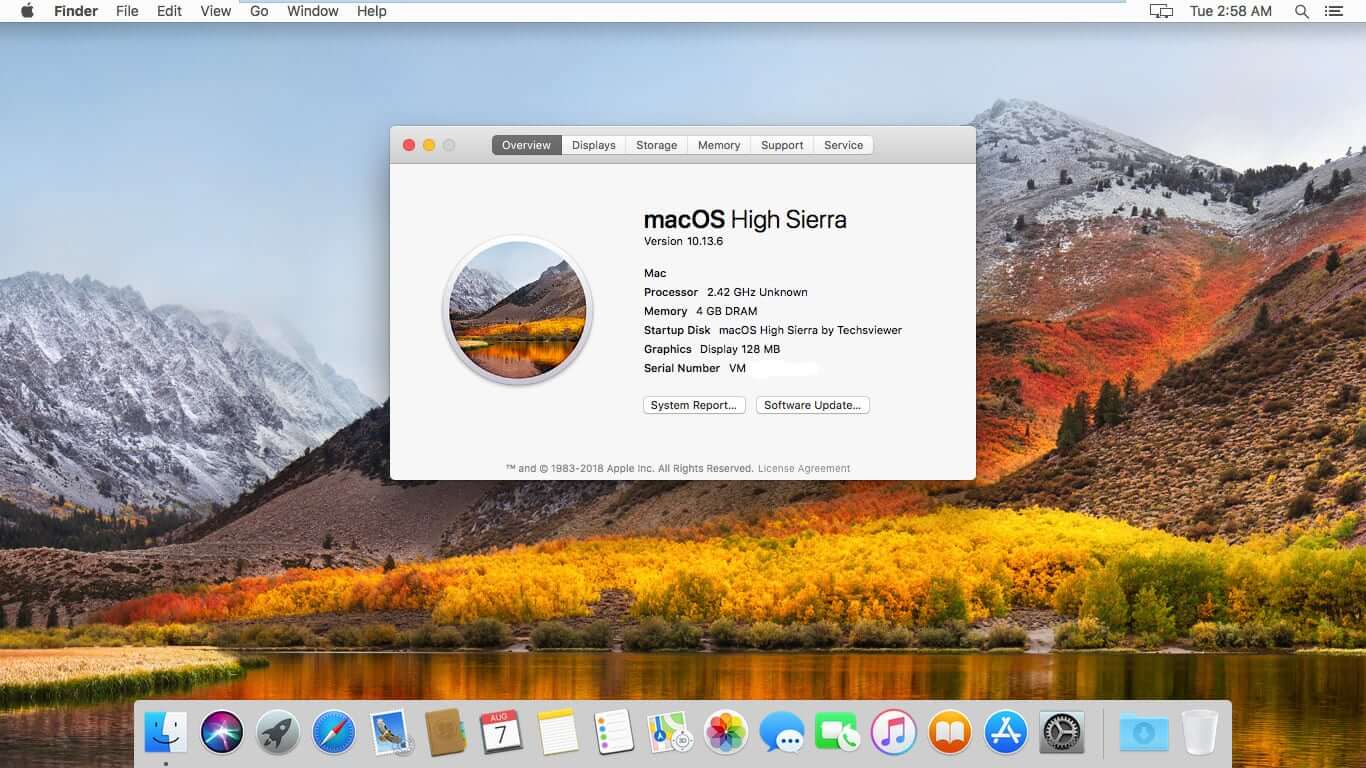

- #Mac os for vmware how to
- #Mac os for vmware software license
- #Mac os for vmware install
- #Mac os for vmware upgrade
#Mac os for vmware upgrade
Since it is typically performed during the installation of ESXi on the bare-metal server, you can always upgrade storage later by adding hard drives and/or arrays. When selecting data storage, it is important to have the data storage pool set up prior to VM creation/deployment. Enter that information and click the Next button.Ħ. You'll be asked to provide the information necessary to identify the type of VM to be created, including name and OS type ( Figure E). Once the wizard loads, you'll be able to select whether you wish to create a new VM, deploy one from an OVF file, or register an existing one from another virtualization suite ( Figure D).ĥ. To create or register an existing VM, click the New Virtual Machine button to launch the wizard that will guide you through the process. To begin the installation process, select the virtual machines button to bring up that management pane ( Figure C).Ĥ.
#Mac os for vmware install
Also, it is from here that we'll be able to install macOS onto a VM ( Figure B).ģ. From the console, you'll be able to monitor the vitals of the host server and manage resources, as needed. At the login screen, enter the credentials created during the installation process for ESXi to authenticate ( Figure A).Ģ. Access your ESXi host from the device or from a browser by navigating to the IP address of the host server. SEE: Boost your Mac productivity with these 10 techniques (free PDF) (TechRepublic)ġ.

If you have not already installed ESXi on an Apple-branded computer or server, please do so before continuing. (iii) to install, use and run up to two (2) additional copies or instances of the Apple Software within virtual operating system environments on each Mac Computer you own or control that is already running the Apple Software, for purposes of: (a) software development (b) testing during software development (c) using macOS Server or (d) personal, non-commercial use.

#Mac os for vmware software license
Note: As per Apple's Software License Agreement for macOS Sierra, Apple will permit you to virtualize up to two instances of macOS Server, so long as it is run on Apple-branded hardware.
#Mac os for vmware how to
While there are other considerations and benefits associated in migrating your physical servers to VMs, the main focus of this article is on how to virtualize macOS so it is hosted on the VMware ESXi hypervisor installed on a Mac server. SEE: Virtualization policy (Tech Pro Research) Increased availability comes from being able to take snapshots of virtual machines (VMs) for up-to-date backups and being able to move VMs to other less congested hosts with the click of a button or script. In permitting IT to do more with less, this helps to keep performance and uptime high, as hosted servers benefit from the allocation of resources while being able to access more, if necessary, from the available pool. In addition to the potential savings, the total cost of ownership (TCO) is lowered as well through simplifying management of the converged systems. Virtualizing systems to be hosted on higher-density servers, with its robust resources and modern, more efficiently optimized hardware, offers most enterprises the ability to compartmentalize its physical server count while lowering its carbon footprint. Can't find packages? Ask your distribution or contribute to creating them! Note that all of those packages are community-developed and maintained, Nextcloud currently only provides a the Appimage you can download above.Image: Getty Images/iStockphoto, porpeller See the latest state and more packages in this post on our forums. You can already find Nextcloud Desktop client packages included in openSUSE Tumbleweed, Arch Linux, Fedora, Debian and Ubuntu. Looking for integration apps like browser add-ins for Passwords, a feedreader and more? Check our app store for integrations! Select one or more directories on your local machine and always have access to your latest files wherever you are. Use the desktop clients to keep your files synchronized between your Nextcloud server and your desktop.


 0 kommentar(er)
0 kommentar(er)
